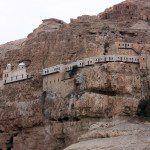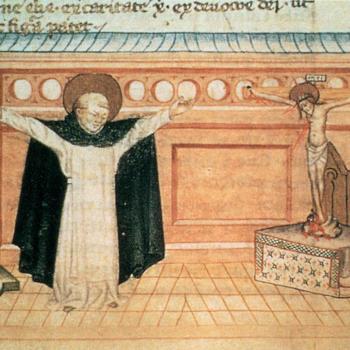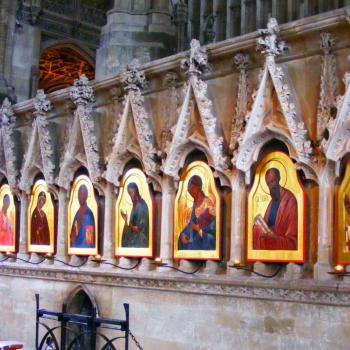![Kami Yamahana Shrine by 禁樹なずな (Own work) [CC BY-SA 4.0 (http://creativecommons.org/licenses/by-sa/4.0)], via Wikimedia Commons](https://wp-media.patheos.com/blogs/sites/637/2017/07/Kami-Yamahana_Shrine-300x225.jpg) In traditional Japanese beliefs and practices, there is a belief in a sacred power, kami, which inhabits all things. This kami is also established and formed particular kami or deities which are believed to reside in sacred places and things. As the book Japanese Religions: A Survey By The Agency For Cultural Affairs explained, kami, the sacred powers which be, can be found in anything and or even in anyone, so that sacred ancestors also became associated with the kami:
In traditional Japanese beliefs and practices, there is a belief in a sacred power, kami, which inhabits all things. This kami is also established and formed particular kami or deities which are believed to reside in sacred places and things. As the book Japanese Religions: A Survey By The Agency For Cultural Affairs explained, kami, the sacred powers which be, can be found in anything and or even in anyone, so that sacred ancestors also became associated with the kami:
Originally, any form of existence that possessed some extraordinary, awe-inspiriting quality were called kami. Mountains, seas, rocks, trees, birds, animals – anything that evoked awe was regarded as kami. Human beings who had some extraordinary quality, people like emperors, heroes, uji, or family ancestors, etc., were also referred to as kami. [1]
With the kami often seen as personalized spiritual forces which have many qualities similar to, but not exactly the same as, faeries in Europe, the belief in their existence, as the belief in the existence of faeries in Europe, demonstrated how humans understand that which often appeared to be ordinary can actually be extraordinary, possessing a transcendent quality which, when experienced, caused a sense of religious devotion to it.
What that devotion entailed differed according to the kind of experience associated with it; what is clear is that the reverence shown to it demonstrates the honor and respect which is due to those people and things that possesses some element of the holy within. When respect and honor is shown to the kami, we would be wrong to assume it is idolatrous. Certainly, through confusion, idolatry could develop in relation to the kami as it does elsewhere where the holiness is encountered without proper guidance, but this does not undermine the holiness itself and the respect which can be and should be shown to it because it has been touched by the holy. Indeed, what the kami demonstrate to all is that holiness can be and is immanent in the world; its source can transcend the world, but once holiness touches something in the world, that which is touched by the holy becomes one of the many ways in which the Absolute Good, the Absolute Real, will make itself known. While what the kami present to is us not the same thing as the incarnation of the person of the Logos, which is the personal joining of the Logos to the world, the kami can be seen as a place where the Spirit, blowing as it wills, can be encountered and its holiness shared. Scripture has its own forms of kami: the Ark of the Covenant was touched by God and was holy, and so God known in and through it. Likewise, Mt. Sinai, deemed a holy place, was itself a form of kami, and in terms of the Christian faith, the relics of the saints continue to show us how people can be seen as merging with and becoming kami.
In Japan, we can find that belief in the kami was accepted not just by those who followed traditional religious beliefs and practices, such as those who kept with the Shinto faith, but also with many outside traditions which enculturated themselves into Japan. Thus, Buddhists were able to find a way to understand and accept the kami within a Buddhist perspective; even the most radical forms of Buddhism like Shin Buddhism (which many other Buddhists questioned), found the kami to be significant, and so said, saying that no Shin follower should show them disrespect:
Furthermore, we simply do not rely on any of the other buddhas and bodhisattvas or on the various kami; we must never belittle them. We must recognize that each and every one of the various kami is indeed included within the virtue of Amida, the one buddha. [2]
For Shin Buddhism, Amida Buddha was seen as the one true Buddha who manifests himself in many forms; the various other Buddhas and spiritual principles which were of positive value were seen to be influenced by Amida, if not actually a form in which Amida reached out to meet people where they were at in their spiritual journey:
That is, all the kami and buddhas have appeared as the various kami and buddhas through compassionate means, to enable us to receive the singular other-power faith that we realize now. Therefore, because all the [kami], buddhas, and bodhisattvas are originally discrete manifestations of Amida Tathāgata, all – each and every one – are encompassed within the single thought-moment in which we, entrusting ourselves, say Namu-amida-butsu; for this reason, we are not to belittle them.[3]
This meant that those who followed Amida Buddha with faith and practiced the invocation of Amida through the nebutsu, (their traditional invocation and prayer to Amida), were seen as actually including in their prayer all the kami and so should not be seen as neglecting them. Shin Buddhists taught that original intent of the kami was to bring a person to an open to a compassionate embrace of the world, giving them the karma which allows them to have an awareness to the benevolence of Amida Buddha and his willingness to save them if they put their faith in him. They serve a pedagogical function, helping people to the Buddha-Dharma, and from there, to Amida:
Item: By kami manifestations, we mean that [buddhas and bodhisattvas] appear provisionally as kami to save sentient beings in whatever way possible; they lament that those who lack faith (shin) in the Buddha-Dharma fall helplessly into hell. Relying on even the slightest of [related past] conditions, they appear provisionally as kami through compassionate means to lead [sentient beings] at last into the Buddha-Dharma.[4]
Thus, those who have gone to Amida have already incorporated all that the kami represent, so that there is no need for special devotion to them:
Therefore sentient beings in the present world [should realize that] those who entrust themselves to the buddha-dharma and say the nenbutsu will surely be recognized by kami [in their various] manifestations as [the fulfillment of] their original intent. For this reason, although we do not specifically worship kami or entrust ourselves to them, when we take refuge in the compassionate vow of the one Amida Buddha, the thought of similarly entrusting ourselves to [the kami] is encompassed within that one.[5]
The approach of Shin Buddhism to the kami is telling, and it is something which Christianity somewhat included in its tradition even if it has not fully developed the implications of this sentiment. There is a sense of the sacred in all things, for God is present everywhere and is said to be closer to us than our own heart. Since the Holy Spirit, the treasury of blessings, not only gives life, but makes things holy (which is why it is the Holy Spirit), is everywhere present and fills all things, all things are open to the indwelling of grace and the holiness the Spirit brings. For the one with the right spiritual vision, any person, place or thing can be seen as holy, giving the viewer a sense of the divine in all things. Mysticism often takes the world as a veil in which the wonderment of God is to be found, and once the veil is lifted, the holy is made manifest: the uncreated energies of God are encountered. Through those energies, we find ourselves in touch with God, for the uncreated energies of God are God.
When we are properly prepared, often through ascetic struggle, fasting, or some special prayer and blessing which comes to us from the grace of God, we can then look to the world with eyes which sees the presence of God in all things. We can see all things reflecting God, giving us an image and likeness of God, for his actions established them and in his actions, God can be made known.
Created things, being in the image and likeness of God, are able to present to us qualities which help us understand God, for we find in them something which is analogous to God. As with all analogies, we must understand the relationship properly, knowing the difference between the analogues are infinitely vast, so we do not reify or take as absolute the representations which point to the absolute, while the analogy at least gives us something to understand, some positive quality which we can associate with God.[6]
The world and all its glory is able to take us to God so long as we do not become attached to the world itself: we can see the world pointing to God, reflecting the glory of God, and is worthy of respect because of the holiness of God in it. The world is good because it was created by God and partakes of and participates in the goodness of God, for existence is good, and all that is predicated existence is predicated that goodness from God. The reflected glory of God in the world, and in the various creatures of the world, is seen in the great chain of being, with the more potentiality a creature possesses, the more goodness is contained in its essence and the better it is able to represent the holiness of God to us. We can and should honor that goodness as a way of respecting and honoring God, but we must not be attached to any particular mediated form goodness and end our pursuit of the holy with it; as Shin Buddhism understood, any such holiness, any such kami, helps us understand goodness as a part of the formation of our appreciation of what is good and holy. We are to respect it in regards to its holiness even as we pursue the source of its holiness, until at least, we reach the goodness and holiness of the Real beyond all being, God himself. In God, we will be able to see and experience the good of all things, and so we are to honor all things in God even as we find our goal, our heart, is with God. We cannot and must not reject the goodness found in the world because it manifests the goodness of God. To denigrate it is to show disrespect to the source of its goodness, God, which is why those who come to know and love God will love all that God has made.
[Image=Kami Yamahana Shrine by 禁樹なずな [CC BY-SA 4.0 (http://creativecommons.org/licenses/by-sa/4.0)], via Wikimedia Commons]
[1] Japanese Religion: A Survey by the Agency for Cultural Affairs (Tokyo: Kadansha International, 1981), 14.
[2] Rennyo Shōnin Ofumi: “The Letters of Rennyo” in Tannishō: Passages Deploring Deviations of Faith; Rennyo Shōnin Ofumi: The Letters of Rennyo. Trans. Ann T. Rogers and Minor L. Rogers (Morago, CA: BDK America, 1996), 61.
[3] Rennyo Shōnin Ofumi: “The Letters of Rennyo,” 71-2.
[4] Rennyo Shōnin Ofumi: “The Letters of Rennyo,” 64-5.
[5] Rennyo Shōnin Ofumi: “The Letters of Rennyo,” 92-3.
[6] See Nicholas of Cusa, On Learned Ignorance. Trans. Jasper Hopkins (Minneapolis: Arthur J. Banning Publishing, 1990), 79 – 83 to show how this is the formation of “positive” or “affirmative” theology which is also seen in the way pagans understood and designated the various qualities of God. The holiness of God pointed to God, and so the names for those objects of holiness reflected various qualities or names of God.
Stay in touch! Like A Little Bit of Nothing on Facebook:
A Little Bit of Nothing











